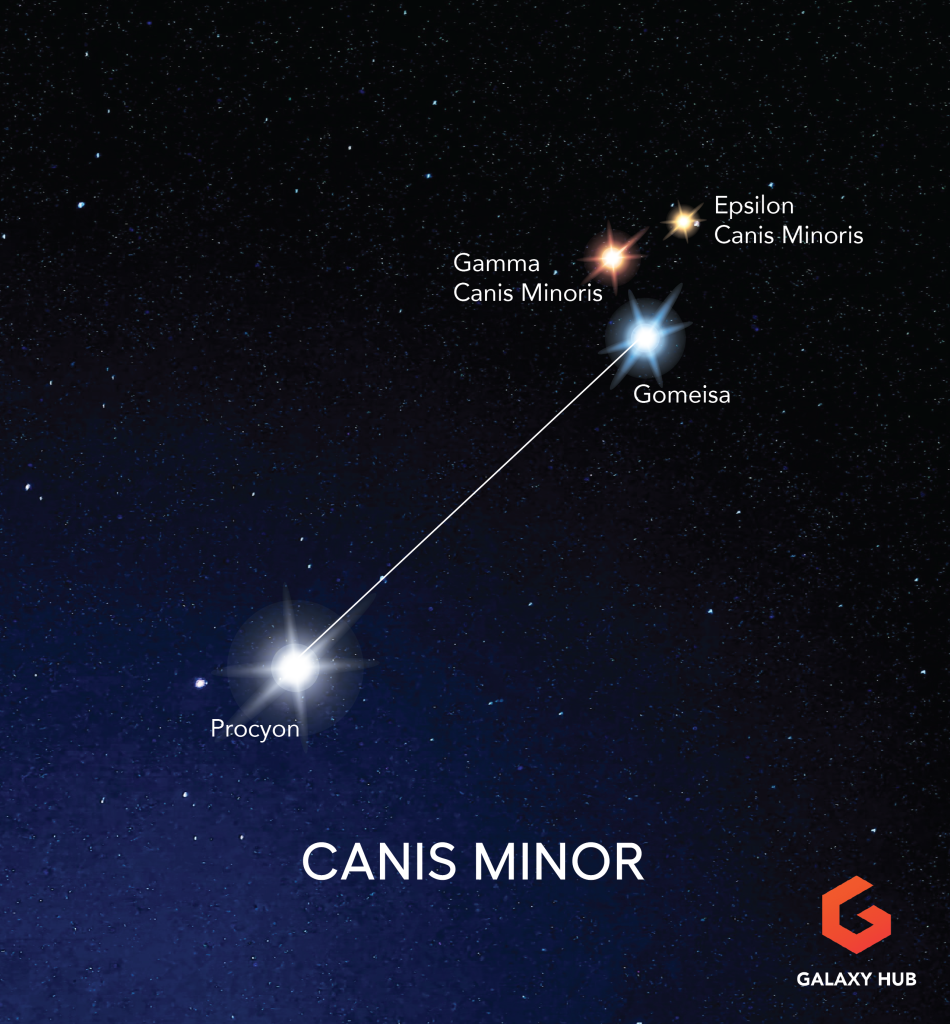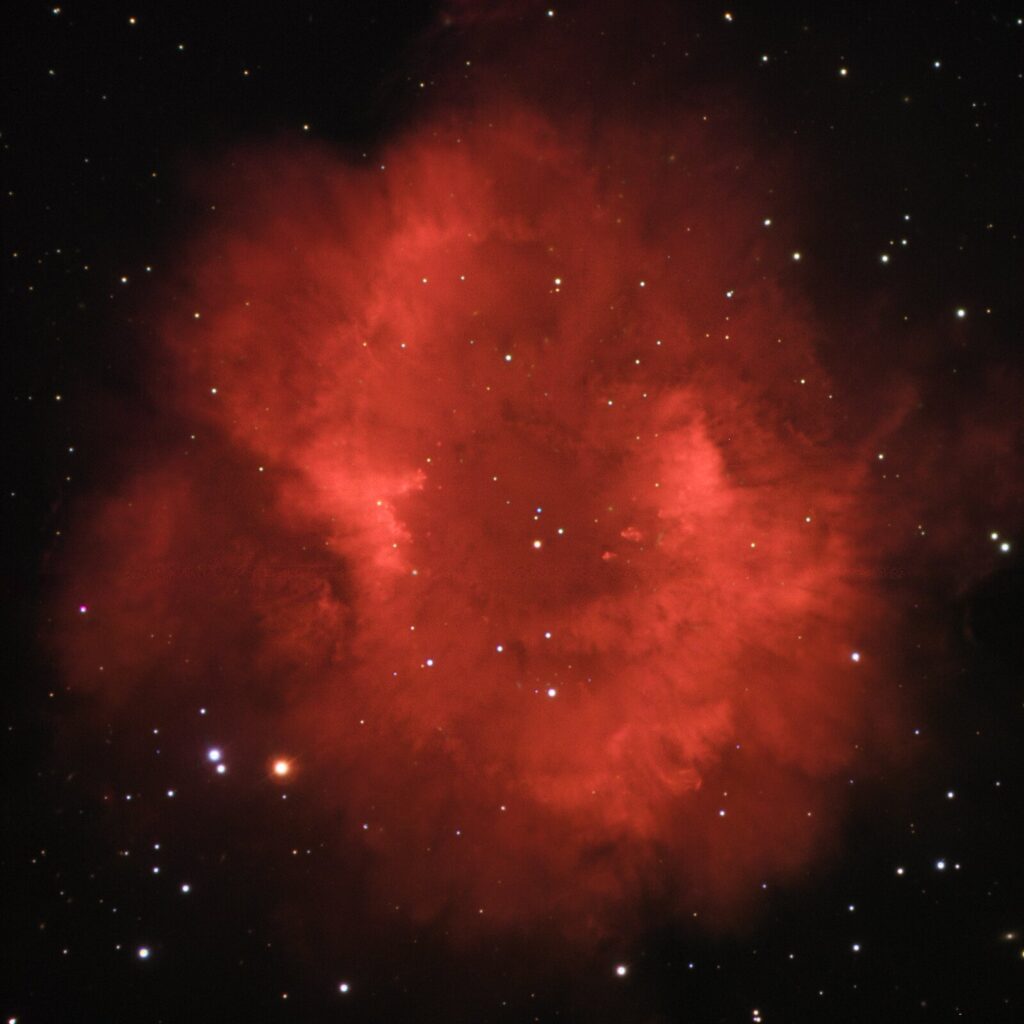Canis Minor is a small constellation located just below the ecliptic plane in the sky. Its name means “Little Dog,” and while many civilizations did consider it a dog, it has represented a multitude of mythological canines and many different animals throughout history. The constellation is perhaps most notable for its brightest star, Procyon, which has a magnitude of 0.34.
Canis Minor is best observed in the winter and is known for an annual meteor shower called the Canis Minorids, which peak on December 10th and 11th each year. Even though the Milky Way runs through much of the constellation, Canis Minor does not have very many deep sky objects to observe unless you possess a large telescope.
Canis Minor Key Data
Name
| Latin | English | Pronunciation | Genitive | Abbreviation |
| Canis Minor | Lesser Dog | Key-nis mahy-nohr | Canis Minoris | CMi |
Location
| Hemisphere | Best Seen | R.A. | Declination |
| Northern | January to March | 07h 06m to 08h 11m | 13.22° to -0.36° |
Features
| Area | Size Rank | # of Messier Objects | # of Stars Brighter than Mag 4 | Brightest Star |
| 183 sq. Deg. | 71st | 0 | 2 | Procyon, Mag 0.34 |
Top Canis Minor Facts
- The shape of Canis Minor is traced out using only two stars – Procyon and Gomeisa
- This constellation hosts a meteor shower, the Canis Minorids, which peaks in December
- Canis Minor has also been considered a fox, jackal, and cat throughout history
- Procyon, the constellation’s brightest star, is the 8th brightest in the night sky
Canis Minor in Mythology
While many throughout history considered Canis Minor a dog or a similar animal, the constellation represented many different dogs to different people throughout the ages. Many of the myths involving this constellation also involve nearby constellations.
In some cases, Canis Minor was not considered a dog. To ancient Egyptians, Canis Minor was a celestial depiction of Anubus, the Jackal God. Some ancient Greeks thought of Canis Minor as the Teumessian Fox – a giant fox fated to never be caught – and Canis Major as Laelaps, the fox’s hunter and a mythological dog who never failed to catch its prey.
Greek polymath Eratosthenes associated Canis Minor with Orion, while Latin scholar Hyginus associated Canis Minor with the constellations of Virgo and Bootes.
According to Hyginus, the hound was Maera, a dog immortalized in the heavens alongside its owner, Icarus of Athens (represented by Bootes) and his daughter Erigone (represented as Virgo). In this myth, the heavenly position of the dog was no coincidence – Maera was placed alongside the river of the Milky Way, so that he would never grow thirsty.
In the 17th Century, German poet Philipp von Zesen saw Canis Minor as the canine Tobias from the biblical Apocrypha.
Many other myths focus only on Procyon, or on the twin bright stars of Procyon and Sirius. These stars were considered wolves to the ancient Macedonians, circling the constellation of Orion and threatening him.
In Babylon, Procyon was a carpenter known for his role in constructing the night sky. Similarly, in Tahitian mythology, Procyon was considered one of the pillars propping up the night sky. To the Inuit, Procyon took on a reddish tinge as it rose during the Arctic winters, and thus it represented the bloody demise of a man who stole food from the village hunters.

Canis Minor in History
Ptolemy identified Canis Minor as one of 48 in his famous star catalogue Almagest. The ancient Greek name for Canis Minor translated to “before the dog,” since Canis Minor is “before” or to the north of Canis Major, which had been more readily identified as a dog.
While many civilizations did consider this constellation a dog, Canis Minor has had many names and forms throughout history. In the 17th Century, German star-mapper Johann Bayer labeled the constellation as both a pit and a sycamore fig tree. Another tree-related myth comes from the Wardman people in northern Australia, who considered Procyon and Gomeisa as humans who were transformed into gum trees. In the late 19th century, English astronomer Richard Proctor labeled the constellation Felis, a cat, and considered Canis Major the only dog in the sky.
Ancient Arabic astronomers also viewed the constellation a bit differently than the Greeks. They considered Mirzam, a star that is now part of Orion, as part of Canis Minor’s dog collar. Canis Minor, as well as its sister constellation Canis Major, both served important roles in ancient Arabic society – shepherds used the position of the constellation to tell when the hot, dry season would end.
Interestingly, the Aztecs as well as ancient Chinese and Korean civilizations grouped several stars of Canis Minor with other stars to make water-related constellations.
In the Aztec culture, stars of Canis Minor, Gemini, and Orion formed a constellation called “water.”
In Chinese culture, stars from Canis Minor and a couple of others were combined to form Shuiwei, a constellation whose name means “water level.” Similarly, Koreans incorporated four stars in Canis Minor into a constellation which translates to “the position of water.”
Want to get started in astronomy?
Our free telescope cheat sheet breaks down the key factors to choosing a telescope and shows you how to get stunning views of planets, nebula, and galaxies!

When and How to See Canis Minor
Canis Minor is best viewed in the winter, from January to March with visibility peaking around 9 and 10 pm in February and March. Observers may also want to view it in December to see its annual meteor shower. It is visible from the North Pole to a latitude of 75 degrees south.
The Lesser Dog can be located in a number of different ways.
First, find the space below the Zodiac constellations of Cancer and Gemini, and Canis Minor is located there. Observers can also search for Orion and Canis Major, two constellations often associated with Canis Minor. Many people incorrectly believe that Canis Major and Canis Minor, are next to each other in the sky. Actually, Canis Minor is to the left of Orion in the sky and the constellation Monoceros is situated between the large and small dogs.
Canis Minor is most easily located using its brightest star, Procyon, which forms one of three vertices of The Winter Triangle. This is a triangle containing three bright and notable stars in the winter sky: Procyon of Canis Minor, Sirius of Canis Major (the brightest star in the winter sky), and the red-hued Betelgeuse of Orion.
Betelgeuse is easy to located as it is the upper left “shoulder” of Orion the Hunter – and Procyon is pretty much level with Betelgeuse if you continue to follow an imaginary line to the left of Betelgeuse.

Canis Minor’s Notable Stars
| Bayer/Gould Designation | Name (s) | Mag | R.A. | Dec. | Distance (LY) | Notes |
| Alpha | Procyon | 0.34 | 07h 39m 18s | +05° 13’ 30” | 11.46 | Usually the 8th brightest star in the night sky |
| Beta | Gomeisa | 2.89 | 07h 27m 09s | +08° 17’ 22” | 160 | A main sequence, slowly pulsating star with a possible companion |
| N/A | 11 Canis Minoris | 5.25 | 07h 46m 16s | +10° 46’ 06” | 313 | The star to seek in order to see the Canis Minorid meteor shower |
| N/A | Luyten’s Star | 9.87 | 07h 27m 24s | +05° 13’ 33” | 12.35 | A red dwarf with several exoplanets, one in the star’s habitable zone |
Procyon
As the 8th brightest star in the night sky, Procyon makes for a great target and an easy way to spot Canis Minor in the sky. At a mere 11.46 light years away, it is one of the closest stars to Earth. The name Procyon came from an ancient Greek phrase meaning “before the dog,” since it rose in the sky before Sirius, the main star in Canis Major, the Big Dog.
These two famous dog stars have been revered since ancient times, and were mentioned in the oldest Babylonian literature. Procyon is also mentioned in a surprising amount of modern fiction – from shout outs in Star Trek episodes to playing a role in the D.C. Comics universe.
Procyon is actually a binary star system made up of a whitish, late-stage main sequence and suspected variable star and a much dimmer white dwarf, with a magnitude of 10.7. This dimmer companion is harder to observe visually than nearby binary star system Sirius, because of its small angular separation and great difference in magnitude between Procyon A and B.
Procyon B is a white dwarf with carbon in its core, but it is interesting because its mass is unexpectedly low.
Gomeisa
Though not as bright in our sky, Gomeisa is actually much brighter than Procyon – it’s just a lot farther away. In fact, ancient Arabs considered Procyon and Gomeisa twin stars.
A rapidly rotating star, Gomeisa’s mass and radius are 3.5 times that of the sun, and it is about 195 times as luminous as our sun. It is suspected to have a very close binary companion star, and has previously been labeled a Gamma Cassiopeaie variable star, but some studies have actually shown that its brightness hardly varies at all.
11 Canis Minoris
A main sequence star faintly visible to the naked eye, this is the star observers will want to locate to see the Canis Minorids meteor shower. It is a suspected variable star whose luminosity is 65 times the Sun’s.
Luyten’s Star
Named after a Dutch-American astronomer who worked to figure out its proper motion, this red dwarf is too faint to be seen with the naked eye, but is noteworthy because of its proximity to Earth and its exoplanets, one of which is confirmed to lie in the star’s habitable zone.
Luyten’s star is just a quarter of the sun’s mass with a third of its luminosity. It is known to be moving away from Earth, and is located a mere 1.2 light years from Procyon. The system has four known exoplanets including GJ 237b, which is a super-Earth and one of the closest exoplanets to Earth to lie in a star’s habitable zone.
Canis Minor’s Deep Sky Objects
| Object | Name(s) | Type | Mag | R.A. | Dec. | Distance (LY) | Min. Equipment |
| PK 217+14.1 | Abell 24 | Nebula | 13.6 | 07h 51m 38s | +03° 00’ 27” | 1730 | Large Telescope |
| NGC 2485 | N/A | Spiral Galaxy | 12.7 | 07h 56m 49s | +07° 28’ 41” | unknown | Large Telescope |
Nebulae
Abell 24
Abell 24 is a planetary nebula visible with a large telescope. It’s a good astrophotography target for long exposures, and observers can locate the nebula about 5 degrees southeast of Procyon.
At a diamter of about 6 arc minutes, Abell 24’s shape is quite round and has areas of varying density – with the gas being more concentrated in some regions than others. The light emitted by the nebula is intensely red – a brilliant color caused by activated hydrogen gas.

Galaxies
NGC 2485
NGC 2485 is a magnitude 12.7 spiral galaxy that can be observed with larger telescopes. It can be observed with telescopes that have an aperture of 10 inches or more, and has an angular size of around 1.5 arcminutes.
According to the Hubble de Vaucouleurs morphological galaxy classification scheme, NGC 2485 is a type SAa galaxy, which means that it is a standard spiral shape with the most tightly-wrapped spiral arms. It can be found in the sky by using Procyon as a marker.
Want to get started in astronomy?
Our free telescope cheat sheet breaks down the key factors to choosing a telescope and shows you how to get stunning views of planets, nebula, and galaxies!







